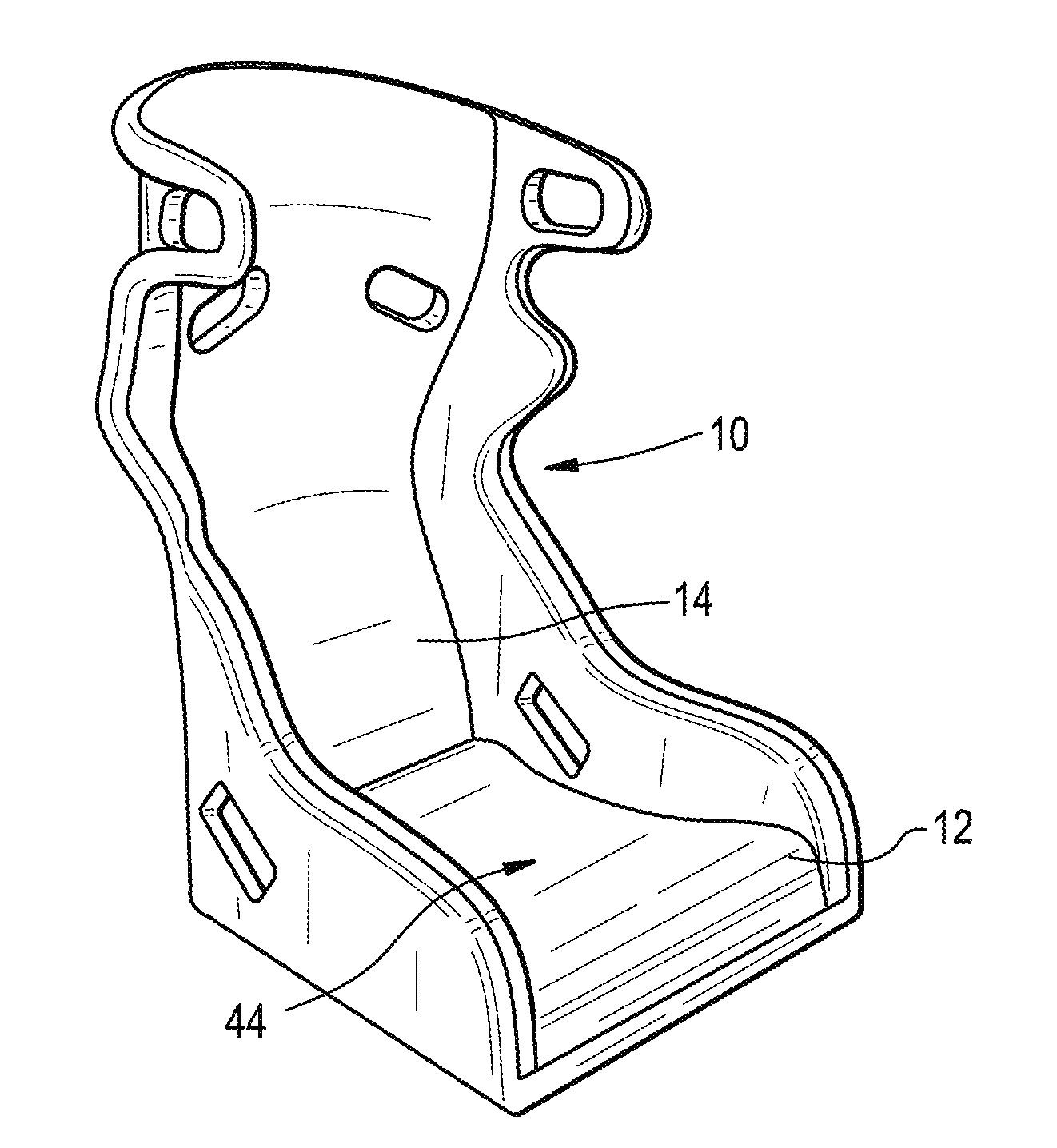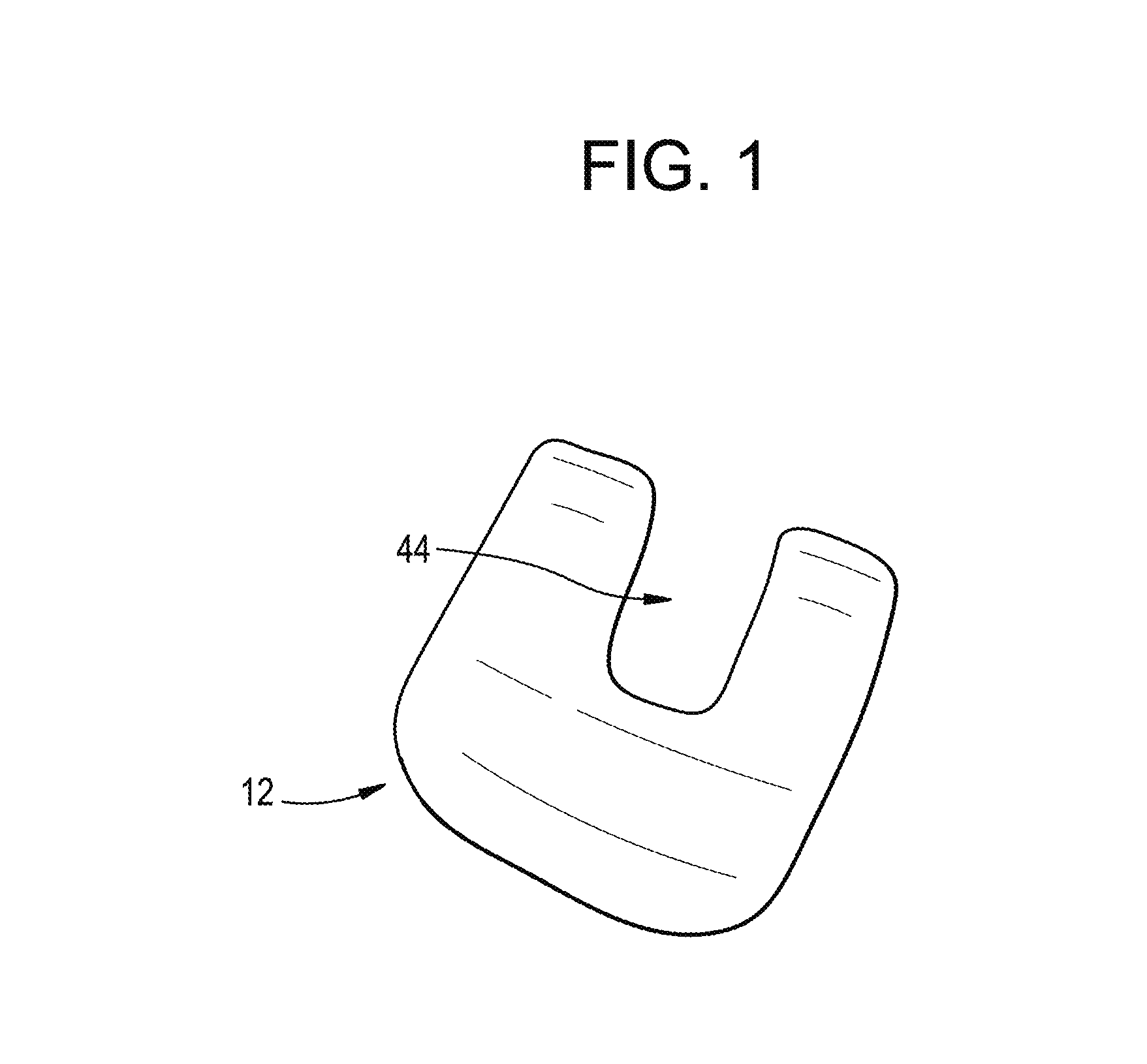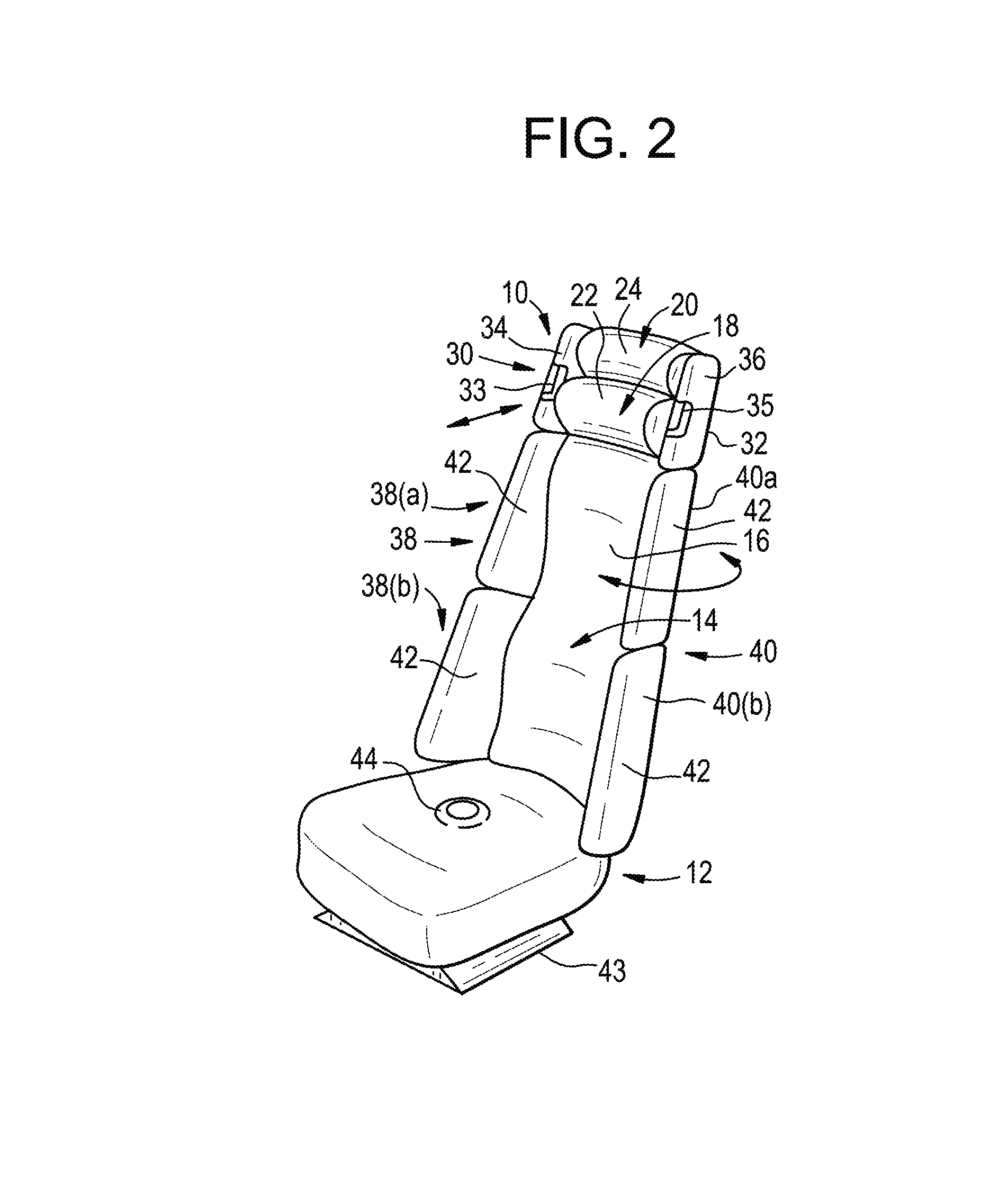Seat for reducing the risk of spinal injuries
a seat and spinal technology, applied in the field of seats, can solve the problems of axial loading into the cervical spine, amplification of shock input, and insufficient testing, and achieve the effect of avoiding whiplash and similar injuries
- Summary
- Abstract
- Description
- Claims
- Application Information
AI Technical Summary
Benefits of technology
Problems solved by technology
Method used
Image
Examples
Embodiment Construction
[0035]The seats and vehicle seats described herein are designed to focused on the interface between the seat and an individual seated therein, and are capable of operating with a variety of different energy absorbing systems. Shock mitigation is managed by a combination of the sacral well design located in the seat pan and energy absorbing foams used in the race car industry.
[0036]This design feature was tested utilizing the WSU human finite element model in combination with the Cervigard SmartSeat® finite element seat model. The WSU simulations show the intended effect of transferring the vertical underbody blast loading from underneath a vehicle through the seat and into sacral region of the spine and divert most of the loading to the sacral-iliac joint. This results in spreading the force over a greater surface area and diverting more energy to the iliac bones, a much easier injury to correct than a spinal fracture that may even result in paralysis.
[0037]A sacral well simulation ...
PUM
 Login to View More
Login to View More Abstract
Description
Claims
Application Information
 Login to View More
Login to View More - R&D
- Intellectual Property
- Life Sciences
- Materials
- Tech Scout
- Unparalleled Data Quality
- Higher Quality Content
- 60% Fewer Hallucinations
Browse by: Latest US Patents, China's latest patents, Technical Efficacy Thesaurus, Application Domain, Technology Topic, Popular Technical Reports.
© 2025 PatSnap. All rights reserved.Legal|Privacy policy|Modern Slavery Act Transparency Statement|Sitemap|About US| Contact US: help@patsnap.com



